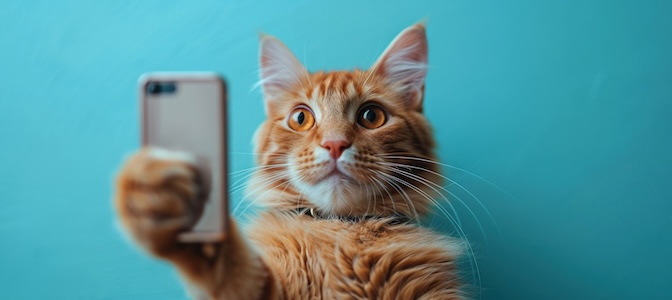Posted by BBN Central on 23rd Apr 2024
Quality Over Quantity: A Strategic Content Investment
Welcome to the fourth instalment in our series of seven articles, each dedicated to exploring smart investment strategies for fearless
READ MOREPosted by BBN Central on 8th Oct 2019
With the globalized world becoming more aware of the sensitivities of diverse cultures and lifestyles, this guide provides tips, red flags, and resources to ensure your words don’t offend others. Specifically, this guide touches on gender, race and sexual orientation.
It only takes one offended person to crumble a multimillion-dollar marketing campaign. Times are changing, and one of the biggest changes to envelope the culture of the 21st century is political correctness.
If you’re a copywriter, or in any position in the communication industries, people pay attention to what you write—hopefully. In fact, you’re paid to apply your refined writing skills to ensure messages are accurate and appropriate. This means your choice of words holds more weight than the average person.
Imagine your company is making a brochure or a social media campaign to tell a meaningful product story. You’ve done the hard work to come up with a clever idea and figure out how to frame it. However, you’re unaware that some of the terms or the imagery you’ve chosen, even if not ill-intended, come across as racist. Or sexist. Or homophobic. You and your campaign are doomed.
This happens all the time. Especially if your company is attempting to penetrate or function in a market that has a different language, culture, and history than your own.
As copywriters, we are responsible for taking clients’ advertising briefs and generating unique copy that grabs the attention of a target audience. It is also our responsibility to inform companies of potential sensitivities a market may have about an ad.
Political incorrectness in copy happens frequently. Here are some examples:
These companies were trying to celebrate these groups of people. However, the message was lost. If we as copywriters didn’t change the dialogue, their message would morph into a negative brand image.
Typically, you should rather err on the side of caution than offend potential customers. To help you recognize some politically incorrect red flags that could cost your clients customers, below are some helpful tips.

While sexism and gender discrimination come in many forms, language is one of the most powerful means through which these concepts are perpetrated and reproduced.
For instance, some may not see an issue with using “she” or “he” for hypothetical scenarios in marketing messages. However, doing so can turn off a large portion of the population. Furthermore, if you use terms like “male nurse” or “mailmen” your message may be mistaken. Nurses who happen to be male are still nurses and females can deliver letters—they can be called letter carriers or posties. These groups may be offended to the point that they are no longer keen to buy your product.
With hundreds of examples of how gendered language can unintentionally offend readers, it’s best to avoid gender-assuming terminology whenever possible. Academics and journalists have their own style guides for using gendered pronouns, but for the typical marketing copywriter, the lines are vague. To be clear, sexist language is language that unnecessarily identifies gender.
To avoid using gendered language, consider the following tips:
For more tips, check out this set of ‘How not to be sexist guidelines.’

The way we present race really matters. Race is a social construct that influences our politics, cultures, and daily lives. And it’s not always presented in an ‘obvious’ way—sometimes it’s as nonchalant as saying a product is ‘flesh’ or ‘nude’ colored, which assumes everyone is the same color.
Three years ago, when I moved to the homogenic country of Denmark from the multi-cultural, multi-racial melting pot that is the State of Florida, I discovered how little interaction there is with people of diverse racial backgrounds. It’s understandable that some people don’t even consider that their message may come across as racist.
For insight on this matter and tips on how to not come across as racist in your copy, check out this post.
On another shade of the spectrum, I’ve seen some Northern Europeans wear costumes or other culturally-identifiable characteristics or regalia (e.g., afros and Native American headdresses) for events because they thought it would be cool. Talking with these people, you realize they were genuinely attempting to celebrate the culture by means of fashion. What they failed to realize was that they were appropriating a culture.
Cultural appropriation is the adoption or capitalization of cultural elements by members of another culture. This is particularly controversial when members of a dominant culture adopt elements of a disadvantaged minority culture. Of course, Denmark doesn’t have the same complex, multi-cultural history as the United States, but it is something all multinational companies need to be wary of when marketing. Not convinced? Remember the Kendall Jenner/Pepsi Cola debacle? I thought so.
Before you consider adding some cultural flare to your copy, do your homework:
For more race or cultural appropriation red flags, check out this post.

In the same way that many copywriters assume that a character is a man and is white, they also assume that the character is straight.
Sadly, even in the second decade of the twenty-first century, homophobic language remains prevalent. Ninety-nine percent of lesbian, gay and bisexual young people report hearing derogatory phrases such as ‘that’s so gay’ or ‘you’re so gay’ in school. There is no excuse for such offensive language in the classroom or in adverts.
We copywriters need to steer companies away from language that may offend someone with a non-traditionally represented sexual orientation. By steering companies in this direction, we not only help to create a safer world for people regardless of sexual orientation, but we’re actually helping companies understand their markets. For example, nearly a quarter (24%) of Americans say they would be more likely to do business with companies known to be LGBTQ-friendly.
With this knowledge, some companies are overtly championing the LGBTQ community. Campbell’s, Ikea and Nordstrom are using LGBTQ-inclusive advertising as a method to communicate their support. While nearly half (46%) of Americans say that seeing a same-sex couple ad wouldn’t necessarily make them more or less likely to purchase a product, some consumers are more likely to be influenced by these adverts. In fact, some consumer groups (gay and lesbian individuals, bisexual people, liberals, millennials, and high-income earners) say they are more likely to spend their money with LGBTQ-friendly companies.
Before you conceptualize your next communications strategy or edit an article, conduct a deeper analysis of your target market. As writers, formulating ideas with precision and elegance is our forte. We shouldn’t trip over political correctness. In fact, having a mindset of political correctness adds another layer of skill and understanding to our repertoire that ultimately improves the way we communicate messages. It stands to reason that, as globalization progresses, ensuring we don’t offend others will be the baseline standard of any copywriter.
Though you may feel a certain way about political correctness, it is not about you fixing society’s problems or correcting offensive wording. It’s about you being paid to create content that engages audiences in the right way. Your sole purpose is to anticipate how a message will be received, including the sensitivities of audiences to that message. As writers, we must consistently stay up to date with these evolving world perspectives to help our clients better understand their customers and the marketplace.
Posted by BBN Central on 8th Oct 2019
1 email a month, EXCLUSIVE stories, and 10 minutes of your time.
Subscribe now
Posted by BBN Central on 23rd Apr 2024
Welcome to the fourth instalment in our series of seven articles, each dedicated to exploring smart investment strategies for fearless
READ MORE
Posted by BBN Central on 12th Apr 2024
Welcome to the third instalment, focusing on smart investment strategies for fearless marketers aiming to win market share in the
READ MORE
Posted by BBN Central on 29th Mar 2024
Since the introduction of Sora, OpenAI's text-to-video model, the worlds of AI and marketing have been abuzz. It's being called
READ MORE
Posted by BBN Central on 19th Mar 2024
Account-Based Marketing (ABM) has rapidly gained traction in the B2B marketing world, promising personalized and efficient strategies to win over
READ MORE